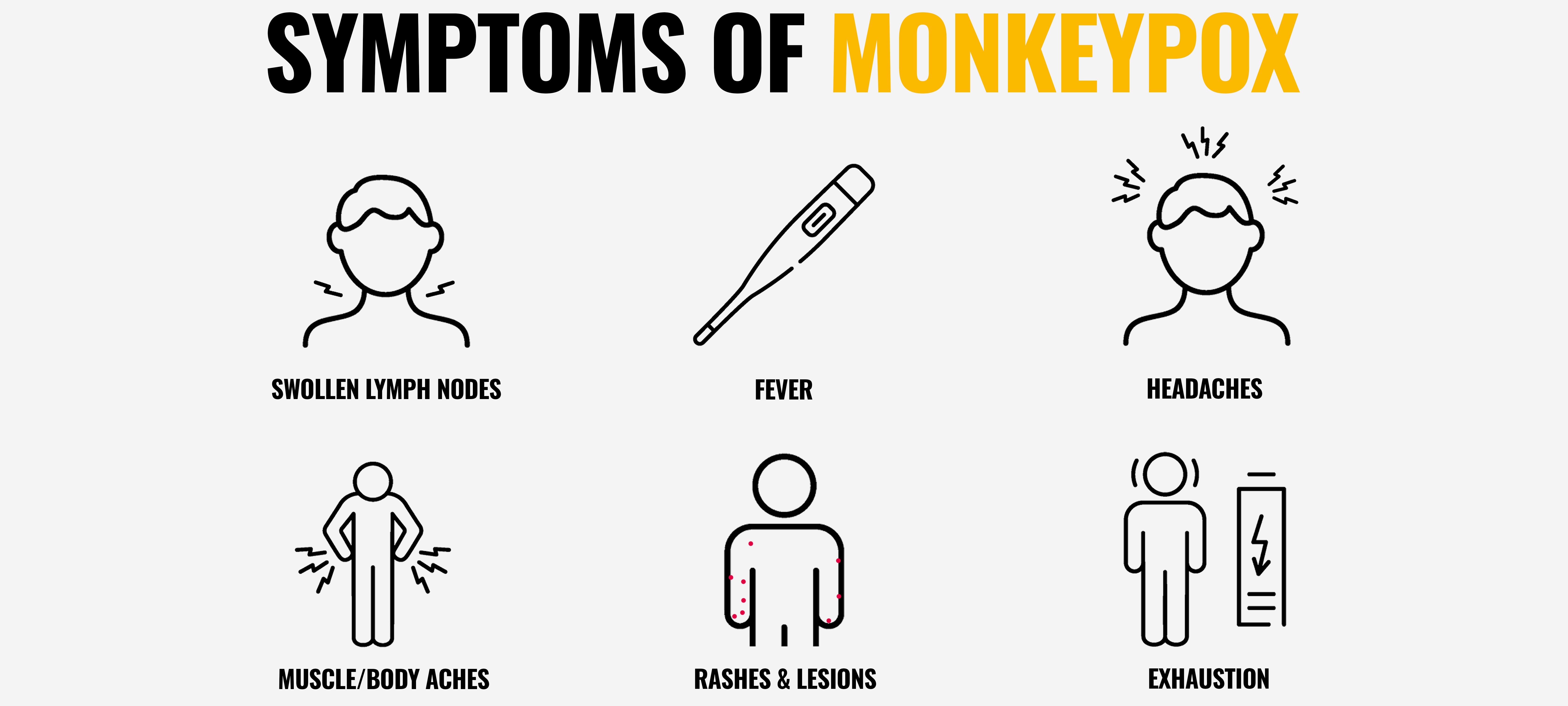Monkeypox: Methods of Prevention & Important Facts
Posted on: 26/05/2022, 00:00

Additional cases of monkeypox are being identified in the United Kingdom every day. Although the risks presented by the disease are low, it’s important to remain vigilant and take appropriate protective measures.
Remain informed and stocked up to supply your customers, employees and self with any necessary sanitisation products and PPE to reduce the risks.
Key facts about monkeypox
-
Monkeypox symptoms last from 2 to 4 weeks. Severe cases can occur. It is usually a self-limited disease
-
Monkeypox virus is the cause of monkeypox. It is an enveloped virus and is a member of the Orthopoxvirus genus in the family Poxviridae
-
Monkeypox can be transmitted through close contact with an infected person, animal or surface contaminated with the virus
-
Monkeypox typically presents clinically with swollen lymph nodes, rash and fever and could lead to several medical complications
-
Several animal species have been recognised as susceptible to the monkeypox virus such as tree squirrels, rope squirrels, dormice, Gambian pouched rats, non-human primates and other species
-
Monkeypox is less contagious than smallpox and causes less severe symptoms. Smallpox is a related Orthopoxvirus infection. In 1980, smallpox was declared to have been eradicated worldwide after a global campaign of vaccination and containment. The last case of smallpox, which was naturally acquired, occurred in 1977. Countries ceased routine smallpox vaccination more than 40 years ago. On average, 3 out of every 10 people who contracted smallpox died
-
In recent times, the case fatality ratio has been around 3-6%. Historically, it has ranged from 0-11% in the overall population
-
Higher fatality rates and severe cases occur more commonly among younger children. Severity can be related to the nature of the complications and the health of the patient (i.e. underlying immune deficiencies)
-
Complications of monkeypox can include secondary infections, sepsis, bronchopneumonia, encephalitis, and infection of the cornea with ensuing loss of vision
-
Persons under the age of 50 may be more susceptible to monkeypox due to the cessation of smallpox vaccinations
-
Monkeypox usually takes 6 to 13 days from infection to onset of symptoms (incubation) but can range from 5 to 21 days
-
Initial symptoms can be fever, swelling of the lymph nodes, muscle aches, back pain, headache and lack of energy
-
Skin eruption usually begins within 1-3 days of the fever and is more concentrated on the face and extremities (hands and feet). It often affects the oral mucous membranes
Preventing monkeypox from spreading
Raising awareness of risk factors and educating people about the measures they can take to reduce exposure to the virus is the main prevention strategy for monkeypox. Below are some more key points about the spread of the virus and methods of prevention.
-
The four vectors of transmission are people, water, surfaces and air
-
Practice regular good hand hygiene, especially after attending public areas. Ideally, wash your hands with soap and water. If this is not possible, use virucidal wipes or alcohol-based hand sanitiser
-
Isolate infected patients from others who could be at risk for infection
-
Practice social distancing and use protective equipment (PPE)
V-TUF COMBAT WIPES - 200 TUB
Reduce the risk of viral spread with V-TUF
The infection can be passed on through close contact or contact with clothing, surfaces or linens used by a person who has monkeypox.
Make sure you have the right products to reduce the spread and risk. For more information, contact V-TUF today to discuss our range.
V-TUF COMBAT WIPES are
- Effective against enveloped viruses
- Alcohol and bleach-free
- Kind to hands and surfaces
- Packaged in eco-friendly recyclable packaging
- Application sized to reduce waste
- Compliant with Biocidal regulations and lab-tested efficacy
- Available in three configurations to suit most applications
V-TUF COMBAT WIPES - 500 TUB
ALCOHOL HAND & SURFACE SANITISER SPRAY








